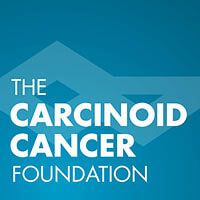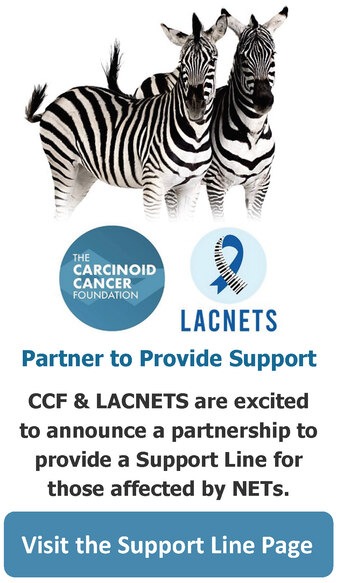MEDICAL OPINION:
When to Start and How to Treat Metastatic Carcinoid
by
Richard R.P. Warner M.D.
Medical Director of The Carcinoid Cancer Foundation
Professor of Medicine
Mount Sinai School of Medicine, New York, NY
Updated 2009
Carcinoids are generally slow growing but they do vary from case to case, and some are more aggressive. The biological behavior of each tumor to a considerable degree determines the vigor of the treatment. It has been established in general that small tumors respond better to treatment than do big tumors. Therefore, it is undesirable to delay treatment while waiting for symptoms or for positive imaging evidence of progressing growth of known tumor(s). In other words, when known metastases are present even before symptoms are present, with any sign of progressing tumor growth,including rising levels of chemical tumor products (neuroendocrine markers) early treatment is usually the best treatment in the long run. The treatment for small tumors in an individual without symptoms need not necessarily be harsh. The treatment can be customized in each case. It is not a matter of “one treatment fits all cases.”
Current evidence indicates that sequential multiple modality treatment most effectively produces significantly prolonged survival.
The choice of treatment in any given case depends on many factors of both clinical and laboratory nature:
- Presence or absence of carcinoid syndrome.
- Age and general condition of patient.
- Histologic patterns and grade of the tumor (typical vs. atypical).
- Ki-67(MIB-1) as a labeling Index indicating rate of cell proliferation.
- Immunohistolochemical staining of tumor cells for various markers.Neuroendocrine (NET) markers of blood levels of chromogranin A, serotonin, tryptophan, ANH, neuron specific enolase, substance P, pancreatic polypeptide, calcitonin, neurokinin A, pancreastatin and urine 24 hour 5-HIAA.Number, size, and location of tumors present.
- Octreoscan® demonstration of positive or negative SST2 receptors.
A wide variety of treatment modalities exists and includes:
- Somatostatin Analogs/Octreotide (Sandostatin, Lanreotide) (which inhibits angioneogenesis as well as having other cytostatic effects along with blocking symptoms of carcinoid syndrome)
- Surgical excision, radiofrequency ablation (RFA) and cryoablation of unresectable tumors.Internal hepatic radiotherapy with Yttrium 90. (TheraSpheres, SirSpheres)
- Hepatic artery chemo, embolus or chemo embolus injection
- Combination treatment with octreotide and alpha-interferon
- Systemic chemotherapy (including 5FU, streptozocin, adriamycin, cisplatin, DTIC, VP16-etopocide and other drugs currently under trial
- Systemic treatment with the radiolabelled somatostatin analogue (90)Y-DOTA(0),Tyr(3)]octreotide and the newer radiolabelled somatostatin analogue (177) Lu-DOTA), Tyr(3)]octreotate. (177) Lu-octreotate therapy, very promising but currently only available in Europe).
- Liver transplant (only in very special selected cases)
- External radiotherapy limited to special instances of bone, brain, or mediastinal metastases
- Nutritional support: high protein low fat diet including low dose niacin, omega 3 fatty acids, and multi vitamin-mineral supplements. In patients with carcinoid syndrome avoidance of foods that provoke/increase symptoms.(Dietary guidelines need to be tailored to each case. For more details read lecture “Nutritional Guidelines”).
- Anti-diarrheal medications


